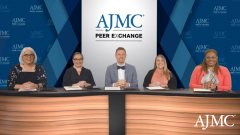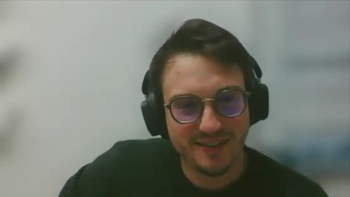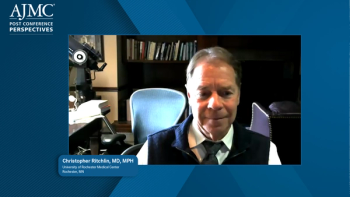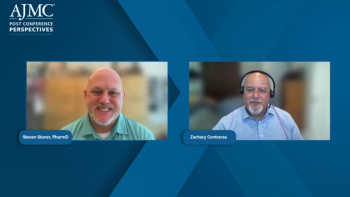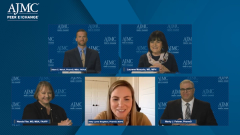
Incidence and Prevalence of RSV
A panel of medical experts discuss the prevalence of RSV in adults.
Episodes in this series

Adam C. Welch, PharmD, MBA, FAPhA: Hello, and welcome to this American Journal of Managed Care® Peer Exchange entitled, “Exploring the Potential Impact of RSV Vaccines.” My name is Dr Adam Welch. I’m a pharmacist and independent vaccine consultant for ETSU Health in Johnson City, Tennessee. Joining me today in this virtual discussion are Dr Laurene Mascola, a physician and immunizations and vaccines policy consultant at the Los Angeles County Department of Public Health in California; Dr Wanda Filer, a physician and chief medical officer at VaxCare in Orlando, Florida; Dr Marty Feltner, a pharmacist and director of pharmacy at Senior Rx Care Pharmacy of Nebraska in Lincoln; and Dr Abby Lynne Singleton, senior pharmacist at Highmark Inc, in Pittsburgh, Pennsylvania.
Today, we’re going to talk about several topics pertaining to RSV [respiratory syncytial virus], including the impact of RSV infections in the adult population, managing infections, and addressing potential barriers to the introduction of RSV vaccines in the market. Let’s get started. Let’s start with Dr Mascola. What is respiratory syncytial virus, and how does it affect older adults?
Laurene Mascola, MD, MPH: Well, regarding respiratory syncytial virus, all persons of all ages, both healthy and with underlying conditions, are at risk for this disease, although the morbidity is greatest in those under 2 and also those over the age of 65. Data indicate that RSV impacts the elderly population, both in the community and in nursing homes, similar to nonpandemic influenza, resulting in the same number of hospitalizations, intensive-care visits, and mortality. The prevalence of RSV infection in adults, out of all respiratory infections, is estimated to be about 5% annually, although it can be up to 7.8% seasonally.
The Centers for Disease Control and Prevention states that about 60,000 to 160,000 adults are hospitalized annually with this disease, so it is a pretty significant cause of morbidity. We also see that, as the population gets to be older, the older population is expected to increase about 39% between 2020 and 2050, the impact of this disease is going to be greater. We see anywhere between 6000 and 10,000 deaths annually in this older population.
Adam C. Welch, PharmD, MBA, FAPhA: We think of RSV a lot of times as a pediatric concern. But you’re saying now with older adults, there’s a significant risk for hospitalizations. You mentioned up to 160,000 adults are hospitalized and 6000 to 10,000 deaths in older adults annually due to RSV, so it’s significant in that population as well.
Laurene Mascola, MD, MPH: And it increases by age. When you look at those under the age of 65 years old, the case fatality rate is around 4%. As you get to be over 75 years old, that case fatality rate goes up to about 6%. And in those severely frail adults, it can even be as high as 10%.
Adam C. Welch, PharmD, MBA, FAPhA: Wow, so it’s very important. Dr Filer, how is RSV spread? What are the symptoms we should be looking for?
Wanda Filer, MD, MBA, FAAFP: I think a lot of people in the adult population are not familiar with RSV, we haven’t been testing for RSV. But it is the person who will come into my family physician office. They’ll come in with a sore throat, they’ll come in with fatigue. They’ll come in with a lot of head and nasal congestion. RSV is known to give a lot of nasal drainage. The other thing is the cough, and that’s where it moves from an upper respiratory illness, where you’ve been infected by those respiratory droplets, those aerosolized droplets from someone who’s sick, or maybe you picked it up on a surface. It can live on a surface for several hours. People can be contagious for 3 to 8 days, and if they’re immunocompromised, even up to 4 weeks. So they can be spreading it out into the community.
You may have no idea that you’ve been exposed to this. You come into the office, and you think it’s a head cold. But in about 25% of patients who come in with “just a cold,” it moves into their lower respiratory system, and they can end up with bronchitis, or tracheobronchitis. As Dr Mascola said, some of those patients will move on to pneumonias and require hospitalizations. That’s why I think many of us are very excited about the idea of an RSV vaccine, a way to prevent illness and keep people from missing days at work and all the suffering that comes with this illness.
Adam C. Welch, PharmD, MBA, FAPhA: Some of the symptoms you described feel a lot like some of the other respiratory conditions we’re familiar with, with COVID-19 and the flu. So how do you differentiate COVID-19, let’s say, with RSV?
Wanda Filer, MD, MBA, FAAFP: It’s not always easy. We often use the term influenza-like illness. It can be very similar to flu, COVID-19, or RSV. More so in the last few years, we’ve got rapid testing. It’s not as widespread in the outpatient world. Many emergency departments are now doing testing. We clearly didn’t test for COVID-19 until the pandemic. We’re doing more flu testing. But RSV, frankly, in adults, I think one of the reasons we’re not aware of it is we weren’t testing for it because there wasn’t anything to do. We would give supportive treatment, but there wasn’t any antiviral to give. There still is not. So, you give supportive care. We’re doing more testing in emergency departments. Frankly, the burden of illness that you heard about a few moments ago from Dr Mascola is probably a lot higher. There’s probably a lot more RSV out there that we didn’t recognize. So, testing is going to help us to get our arms around this a lot better.
Laurene Mascola, MD, MPH: Wanda, aren’t there also asymptomatic people who have RSV who can also be spreading the disease?
Wanda Filer, MD, MBA, FAAFP: Absolutely. As I mentioned, sometimes, especially people who are immunocompromised, might be infected for weeks, and they can be spreading that disease silently. They have no idea. Many people will have a low-grade infection, they feel absolutely fine. Meanwhile, they’re spreading it to the community. The peak is oftentimes in the winter, when we see this illness in adults. It’s the time, if you think about it, cold and flu season. And this is one of those offenders.
Marty J. Feltner, PharmD: I think you made a valid point where it’s underreported. We really don’t know the prevalence of RSV in our community, in our long-term care settings right now. The virus is very similar in clinical presentation to influenza, and COVID-19. So, we really need to start testing for all 3, especially in long-term health care facilities.
Laurene Mascola, MD, MPH: Also, if you look at it from a public health point of view, right now, most states don’t have RSV as being a reportable condition, again because there hasn’t been anything that we could do to prevent it, so there hasn’t been any reason to count it. Most state and local health departments don’t even count cases of RSV infection, or look for it, so we really don’t know what’s happening in the community.
Marty J. Feltner, PharmD: It’s voluntary reporting. There are maybe 12 or 14 states that are reporting RSV infections.
Adam C. Welch, PharmD, MBA, FAPhA: Dr Filer, you mentioned the seasonality of RSV and when it peaks. For the past year with COVID-19 and the pandemic, people weren’t interacting in the way they normally have in years past. So, have we seen changes in RSV over the past few years?
Wanda Filer, MD, MBA, FAAFP: We have, and maybe it’s the public health nerd in me a bit, but I find it really interesting. When people were staying at home, they were wearing their masks, and what we saw was RSV was happening in June. It was happening through the summer. There were very high burdens. Everyone’s heard the stories of pediatric ICUs [intensive care units] filling up, but you were also seeing it in the adult space. And adult ICUs, whether it was COVID-19, or RSV, sometimes they were coexisting. And with influenza, there were multiple burdens, and it was occurring year-round. The suspicion is it will go back to a more normal pattern now that life is, in theory, returning a little more to normal. So that October to March time frame is probably, again, when we’re going to see RSV occur.
Adam C. Welch, PharmD, MBA, FAPhA: We see RSV peaking around the same time that influenza could be peaking, and it can provide this extra burden of upper respiratory symptoms that people need to deal with, and that providers need to navigate in this process.
Marty J. Feltner, PharmD: From a pharmacy perspective, we could be doing all 3 vaccinations during our influenza season, which is going to be a huge challenge in the pharmacy and the health care community as well.
Laurene Mascola, MD, MPH: I think for the first time, we’re looking at an adult platform for vaccines coming in the fall. Usually, we didn’t think of adults as having an established routine for getting vaccinations, but now we’re looking at at least 3 vaccines every fall. With the pneumococcal vaccine, flu vaccine, and COVID-19 boosters, and now maybe even RSV, we’re looking at 4 vaccines that adults might need to be getting every fall season.
Adam C. Welch, PharmD, MBA, FAPhA: A lot more information and a lot more preventive options coming forward for us as providers.
Transcripts edited for clarity.
Newsletter
Stay ahead of policy, cost, and value—subscribe to AJMC for expert insights at the intersection of clinical care and health economics.

